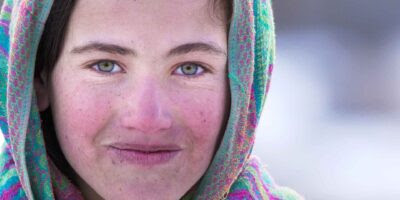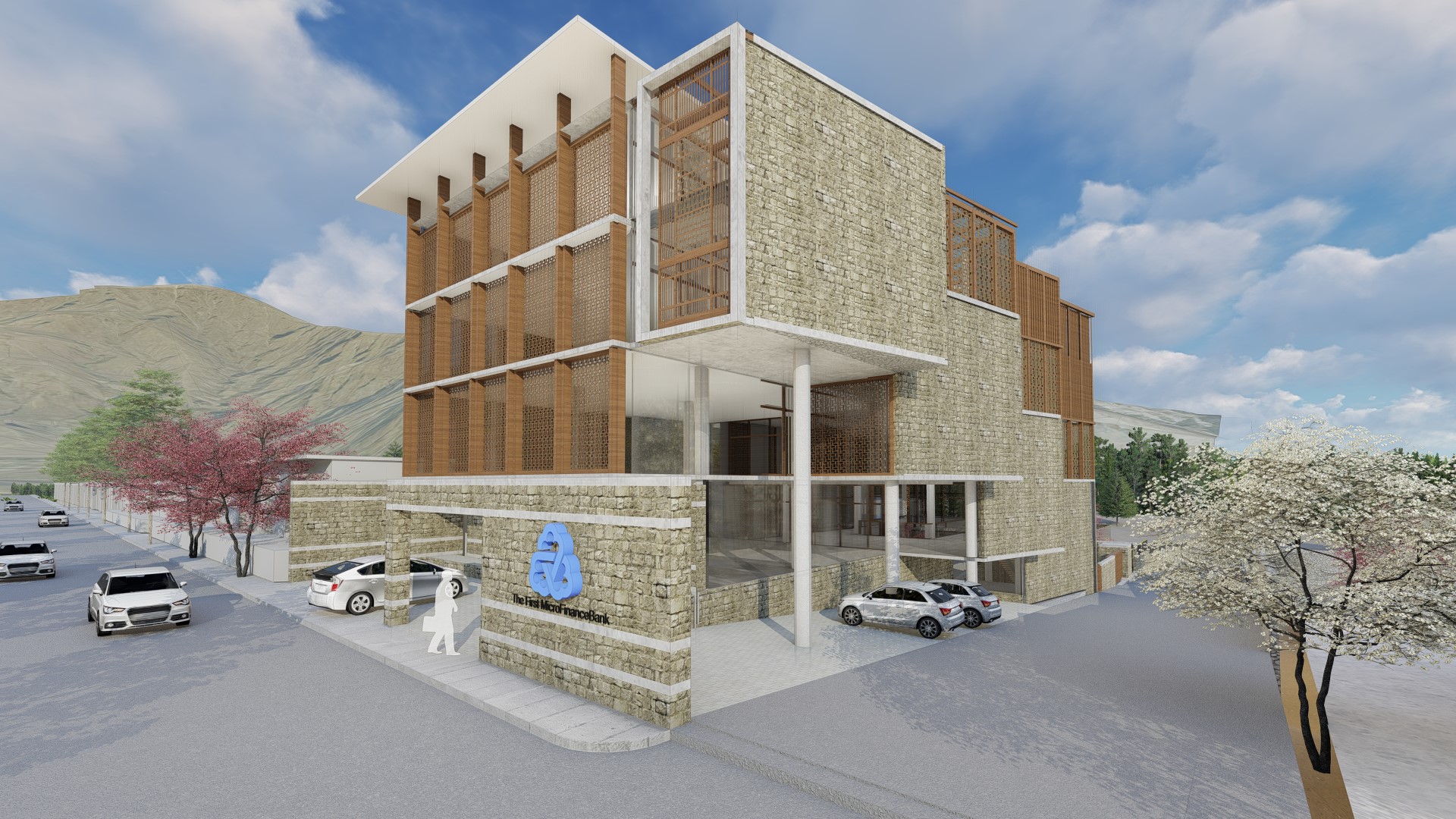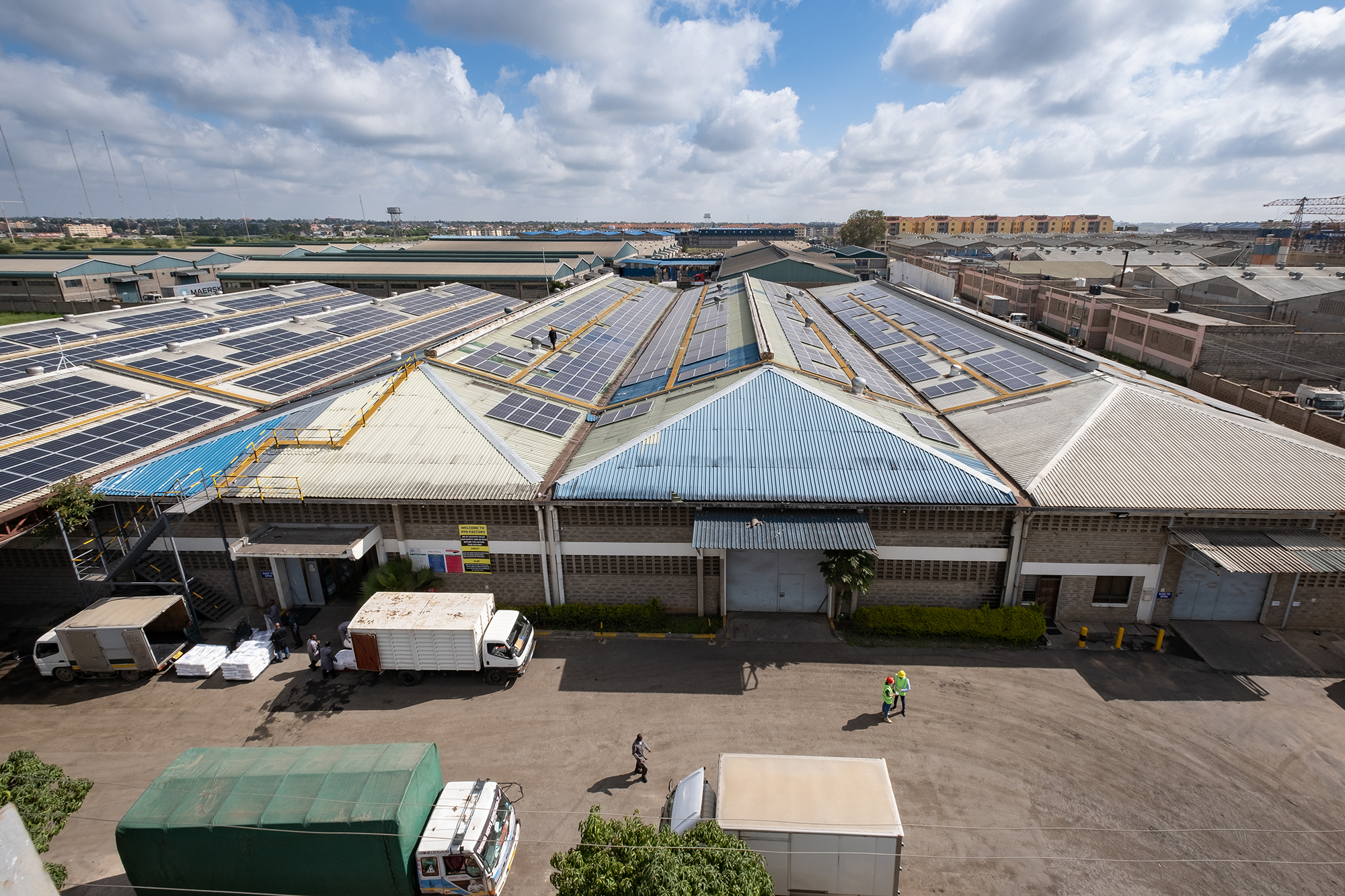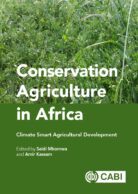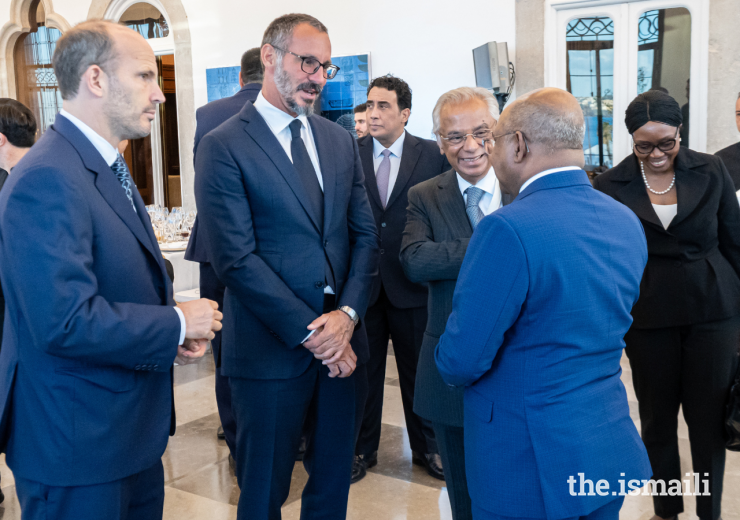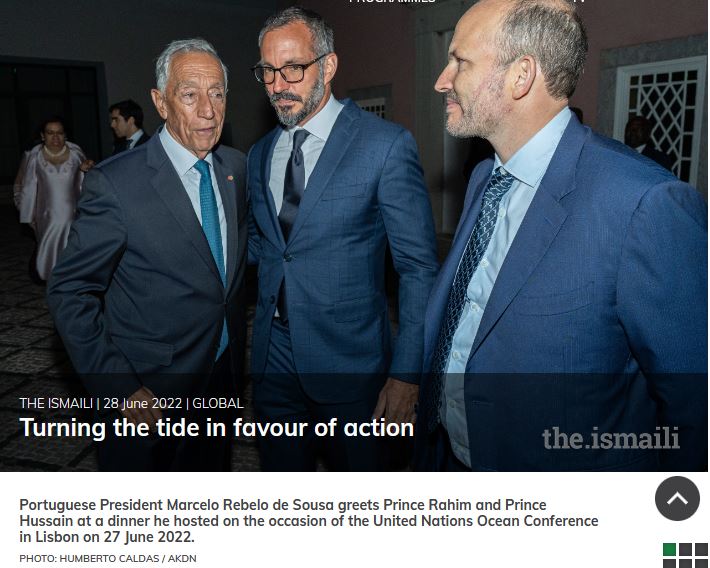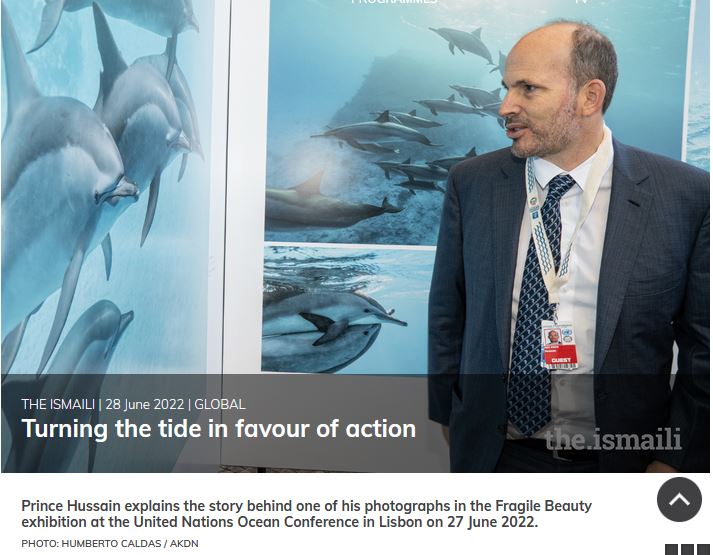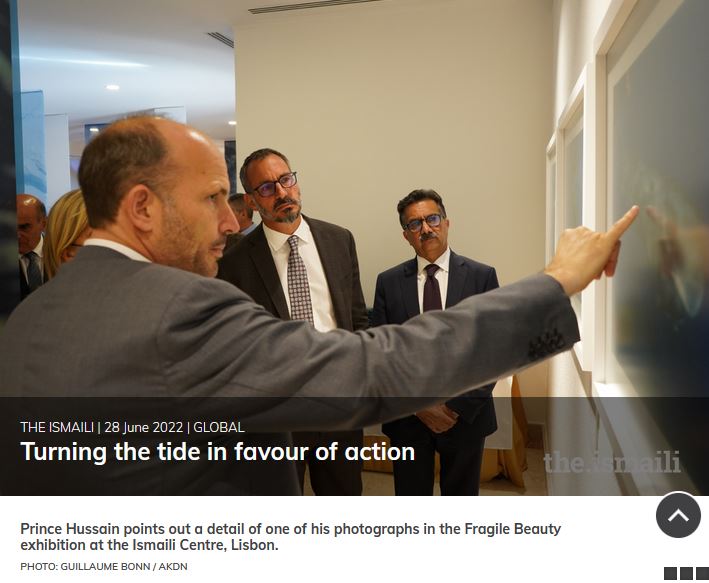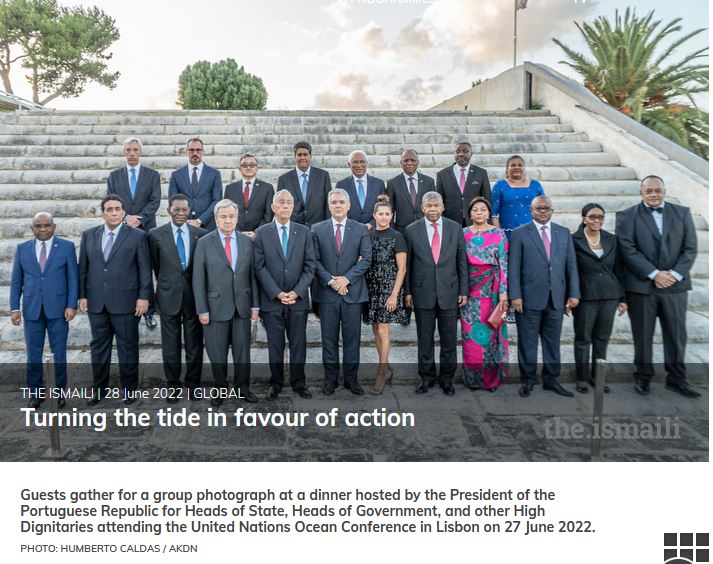*************************
Aga Khan warns climate change will affect Muslim world
Spiritual leader claims ‘band of land’ where many Muslims live could be wiped out
Published: 19:12 November 5, 2016
Gulf News
Paul Crompton, Staff Reporter
Dubai: Climate change threatens to wipe out areas of the Islamic world within two decades, the spiritual leader of around 25 million Muslims said on Saturday.
Many of the world’s Muslims live in a “band of land” under threat from natural disasters caused by climate change, the Aga Khan told a hushed audience gathered at a Dubai hotel. “We’re beginning to see in many parts of the Muslim world … how global warming is beginning to create situations where life is at risk, where it was not at risk before.”
“We’re seeing villages are being wiped away by earthquakes, by landslides, by avalanches, we’re seeing people moving to dangerous areas in modern environments.” And with more people living in cities than ever before, many end up living in dangerous, unsafe conditions, he added.
The 79-year-old spiritual leader told the audience, made up mostly of urban planners and architects gathered from around the world, that they can help.
*****************
By Alissa J. RubinPhotographs and Video by Bryan Denton
Alissa J. Rubin and Bryan Denton spent months reporting from nearly two dozen cities, towns and villages across Iraq.
July 29, 2023
The word itself, Mesopotamia, means the land between rivers. It is where the wheel was invented, irrigation flourished and the earliest known system of writing emerged. The rivers here, some scholars say, fed the fabled Hanging Gardens of Babylon and converged at the place described in the Bible as the Garden of Eden.
Now, so little water remains in some villages near the Euphrates River that families are dismantling their homes, brick by brick, piling them into pickup trucks — window frames, doors and all — and driving away.
“You would not believe it if I say it now, but this was a watery place,” said Sheikh Adnan al Sahlani, a science teacher here in southern Iraq near Naseriyah, a few miles from the Old Testament city of Ur, which the Bible describes as the hometown of the Prophet Abraham.
These days, “nowhere has water,” he said. Everyone who is left is “suffering a slow death.”
Children in a small body of water a few inches deep.

Boys searching for fish in the stagnant, shallow waters of a shrinking irrigation canal in a village on the outskirts of Najaf, Iraq.
Salt crystals on a dried-out agricultural field, with dead palm trees in the background.

Desiccated agricultural fields are now a common site in once verdant areas of Iraq. In many places, the ground water has become too salty to drink.
Image
Two people and several animals inside an outdoor structure.

A dead water buffalo in a family’s corral near Basra. As water has become scarce, farmers are struggling to keep their herds alive.
You don’t have to go back to biblical times to find a more verdant Iraq. Well into the 20th century, the southern city of Basra was known as the “Venice of the East” for its canals, plied by gondola-like boats that threaded through residential neighborhoods.
Indeed, for much of its history, the Fertile Crescent — often defined as including swaths of modern-day Iraq, Israel, Lebanon, Syria, Turkey, Iran, the West Bank and Gaza — did not lack for water, inspiring centuries of artists and writers who depicted the region as a lush ancient land. Spring floods were common, and rice, one of the most water-intensive crops in the world, was grown for more than 2,000 years.
But now nearly 40 percent of Iraq, an area roughly the size of Florida, has been overtaken by blowing desert sands that claim tens of thousands of acres of arable land every year.
Climate change and desertification are to blame, scientists say. So are weak governance and the continued reliance on wasteful irrigation techniques that date back millenniums to Sumerian times.
A tug of war over water — similar to the struggles over the Colorado River in the United States, the Mekong in Southeast Asia and the Nile in northern Africa — has also intensified water shortages for tens of millions of people across the region.
Drying Up the Fertile Crescent
Upstream dams in Turkey and Iran have siphoned off water from Iraq’s two major rivers.
Black Sea
Dams built in the Tigris and Euphrates river basin
TURKEY
Keban Dam
Caspian Sea
Karakaya Dam
Ilisu Dam
Ataturk Dam
Mosul Dam
IRAN
Daryan Dam
Mediterranean Sea
Tigris and Euphrates river basin
LEBANON
SYRIA
Baghdad
IRAQ
JORDAN
SAUDI ARABIA
KUWAIT
Area of detail
Persian Gulf
250 kilometers
250 miles
Note: Not all dams are shown, and smaller tributaries are omitted.Source: Global Dam Tracker by Alice Tianbo Zhang and Vincent Xinyi GuBy Elena Shao
Another culprit is common to large swaths of the world: a growing population whose water demands continue to rise, both because of sheer numbers and, in many places, higher living standards, increasing individual consumption.
Here in Iraq, the fallout is everywhere, fraying society, spurring deadly clashes between villages, displacing thousands of people every year, emboldening extremists and leaving ever more land looking like a barren moonscape.
photophotophotophotophoto

Depleted, dirty rivers and groundwater are causing typhoid, hepatitis A and outbreaks of cholera, like this one.
The creeping desert sands are swallowing farmland, forcing people to crowd into cities.
Rivers and canals have dipped so low that Islamic State militants cross them easily to attack villages and security outposts.
Fish farmers have threatened government regulators who have tried to close them down for violating water restrictions.
The country is even changing underground.
In many areas, water pumped from below the surface is too salty to drink, the result of dwindling water, agricultural runoff and untreated waste. “Even my cows won’t drink it,” one farmer said.
Even in the north, where fresh water has historically been available, well diggers in Erbil, the capital of Iraqi Kurdistan, bore down 580 feet last summer — and still found only salty water.
Iraq is now the fifth most vulnerable country to extreme temperatures, water scarcity and food shortages, the United Nations says. Next door in Iran, a province of two million people could run out of water by mid-September, Iranian lawmakers said, leaving few options beyond mass exodus.
And for the rest of the Middle East and some other areas of the world — including parts of Mexico, Pakistan, India and the Mediterranean — Iraq and its neighbors offer an unmistakable warning.
“Because of this region’s vulnerabilities, one of the most vulnerable on the planet, it is one of the first places that is going to show some kind of extreme succumbing, literally, to climate change,” said Charles Iceland, the director of water security for the World Resource Institute, a research organization.
PART 2

Video
https://vp.nyt.com/video/2023/07/12/109 ... g_720p.mp4
An almost empty irrigation canal in Dhi Qar Province.CreditCredit...
Many people in the villages near the Euphrates River remember how, 20 years ago, the date palm trees grew so thick and close together that their leaves blocked the sunlight. The splashing of children in the irrigation canals and the sloshing of water jugs being carted home provided the backbeat of summer life.
Now, the irrigation canals are so dry in summer that the small bridges spanning them are barely necessary and the sounds of daily life signal water’s scarcity: the crackle of brown grasses and the rustle of dried out palm leaves. Some palms have no leaves at all, their bare trunks standing like the columns of ancient ruins.
Water comes from the government in red plastic barrels, in rations of about 160 gallons a month per family. Even when used sparingly, it barely lasts a week in the heat, said Mr. Sahlani, the sheikh and science teacher, who lives in the village of Albu Jumaa. Graffiti scrawled in Arabic on a half-destroyed concrete wall expressed the frustration: “Where is the state?” it read.
Image
The stumps of dried-out palm trees on an abandoned farm.

Farmers have increasingly abandoned their homes and lands, moving to overcrowded cities in search of better economic prospects.
Image
A man sitting in the driver’s seat of a car splashes water on his face.

Sheikh Adnan al Sahlani near his home in southern Iraq, which is suffering from a severe dearth of water.
Image
A group of people sitting on multicolored carpets. Many are wearing traditional Iraqi headgear.

A gathering to discuss plans to protest to the government about the absence of water in Dhi Qar Province.
As recently as the 1970s and 1980s, Iraq’s water ministry built artificial lakes and dams to hold the immense annual overflow from winter rains and gushing snow melt from the Taurus Mountains, the headwaters of the Tigris and Euphrates.
Even today, traces of Iraq’s greener past can be seen every spring. In the Anbar desert, a brief winter rain can turn the shallow valleys green and speckle them with flowers. Along the Tigris and Euphrates Rivers, the water still nourishes trees beside the narrow banks, with bands of green fields on either side.
But even those bands have shrunk in recent decades.
The region is getting hotter — faster — than many parts of the world. By some estimates, the Middle East and eastern Mediterranean could warm by 5 degrees Celsius (9 degrees Fahrenheit) or even more during this century. In the worst months of summer, some places are already nearly unlivable.
Precipitation, already low, is expected to wane across the Middle East. The drought gripping Iraq is now in its fourth year, and the country is particularly vulnerable because most of its water comes from rivers that originate outside the country, holding it hostage to the decisions of its neighbors, Turkey and Iran.
PART 3
WATER WARS
Image
A bridge crossing a now entirely dried-out body of water.

So much water has disappeared that many bridges have become unnecessary.
The chokehold on Iraq’s rivers has been tightening for decades.
Since 1974, Turkey has built 22 dams, hydroelectric plants and irrigation projects on the Tigris and Euphrates Rivers, modeled in part on the Tennessee Valley Authority in the United States.
Then, in the early 2000s, Iran started building more than a dozen smaller dams and tunnels on tributaries to the Tigris, devastating Iraqi provinces like Diyala, which was known just 10 years ago for its peaches, apricots, oranges and dates. The tributaries from Iran are the only source of water in the province, other than the dwindling rainfall.
The impact has been drastic: The water flowing into Iraq has dropped almost 50 percent on the Euphrates and by about a third on the Tigris since major dam building began in the 1970s, according to statistics from Iraq’s water ministry.
The Tigris Has Less Water
Aggressive dam-building has reduced the water available to Iraq even as its population has grown rapidly.
100 billion cubic meters
Tigris River annual inflow
90
80
1942
46.6 billion
1996
53.1 billion
2022
32.3 billion
70
60
50
40
10-year
rolling average
30
20
10
1940
1950
1960
1970
1980
1990
2000
2010
2020
Note: Chart shows inflow to the Tigris River and its major tributaries, including the Great Zab, Little Zab and Diyala rivers.Source: Iraq Ministry of Water ResourcesBy Elena Shao
Hashem al-Kinani and his family have felt the changes firsthand. For generations, they farmed 20 acres east of Baghdad, on the Diyala border, facing one trial after another.
First, the American invasion and the ouster of Saddam Hussein bit into the state’s support of farmers. Then in 2006, Al Qaeda moved in and killed many local men, leaving their headless bodies in ditches. Hashem lost an uncle, and the family house was bombed by Al Qaeda. Making matters worse, rainfall has become more erratic and gradually diminished. As the Iranian dams came on line, river water became too scarce to grow fruit.
The fig and pomegranate trees have died. His family sold off their 1,500 head of cattle and their sheep, because it was impossible to feed them. He’s not sure how much longer he can hang on.
“Farming is over here,” he said. “I cannot stay, but what can I do?”
Image
A bearded man sitting on a tractor.

The family of Hashem al Kinani has farmed 20 acres east of Baghdad for generations, but over the last two decades water has become too scarce for fruit growing.
Image
A concrete house with one roof caved in and rubble in front.

An abandoned home in a farming village.
Image
A person offering cups of water to half a dozen others.

Most of Iraq’s drinking and irrigation water comes from rivers that originate outside the country, holding it hostage to the decisions of neighboring Turkey and Iran.
History is replete with water wars, and one of the earliest recorded conflicts took place here in the Fertile Crescent, where scribes documented a fight over water between Sumerian city states more than 4,000 years ago in what is now Iraq.
Many modern nations have gone on the offensive to ensure that their people have enough water. Ethiopia has spent years building a colossal dam on the Nile, inciting fear and anger from Egypt downstream. China has done the same with the Mekong. Central Asian nations have had a long-running feud over the Amu Darya and Syr Darya Rivers, which have been drained to such an extent that by the time they reach the inland Aral Sea, there is little water left.
Worldwide, countries share nearly 900 rivers, lakes and aquifers, according to the United Nations, and though a treaty exists to govern their use, fewer than half of all countries have ratified it. Notably absent from the list are upstream nations like Turkey, Iran and China.
In 2021, Iraq’s water ministry threatened to drag Iran to the International Court of Justice for taking its water. But Iraq’s Shiite-dominated government, which is close to Tehran’s rulers, dropped the issue.
photophotophotophotophoto

Now the water flowing into eastern Iraq has been cut so much that floodplains have become parched fields.

A lack of water has complicated security efforts and the continuing battle against a persistent Islamic State insurgency.
Drought brings other, less obvious dangers, too.
In parts of Iraq, rivers and irrigation canals once provided strategic barriers — their waters too wide, fast or deep for extremist fighters to traverse.
Today, if those waters are running at all, they are often low enough to walk across.
Militants who had been pushed back in recent years are taking advantage of the drying landscape to come back and attack with ease, according to Sheikh Muhammed Dhaifan, who has been fighting to keep his tribe northeast of Baghdad from leaving the 44 villages where they have worked the land for generations.
When Al Qaeda seized the tribe’s land in 2005, it used stones to block the irrigation canals fed by the Adaim River and forced many farmers to flee.
After Al Qaeda’s defeat, Sheikh Muhammed persuaded most of his clan to return. But then in 2012, as the Islamic State began to emerge, his tribe was forced to leave again.
Finally, after almost five years, ISIS was vanquished and the villagers began to come back.
Now the chief enemy is drought, stealing not just their livelihoods, but also their sense of safety. In some places, the water hardly covers the pebbles lining the riverbed. ISIS barely has to slow down to get across.
“We used to be protected by the river,” said Sheikh Muhammed. “Now, sometimes they walk, sometimes they drive their motorbikes, the water is so low.”
Last year, Islamic State fighters crossed on foot at night and killed 11 soldiers, many as they slept, at an Iraqi army outpost on the river’s banks.
This year, the fighters have moved farther east, attacking villages on the Diyala River, which is also low because of drought and Iran’s dams. More than 50 civilians were killed in the province in the first five months of 2023, most by fighters aligned with ISIS.
Image
Two people sit on an ornate couch in front of a large painting.

According to Sheikh Muhammed Dhaifan, militants who had been pushed back in recent years are taking advantage of the drying landscape to attack with greater ease.
Image
A bird’s-eye view of a sandy, dried-out landscape showing small homes turned to rubble.

Farmers’ homes that were destroyed by the Islamic State during its occupation of this area of Diyala Province in 2014 and 2015.
Image
Three people stand inside a brick building.

Farmers listening to a security discussion. In parts of Iraq, rivers and irrigation canals that once provided strategic barriers have disappeared.
In the past, the snowmelt and rains sometimes swelled the region’s rivers, prompting Turkey and Iran to share more water with Iraq. But the future looks unlikely to offer much respite.
The current trend of a hotter, drier Iraq — and a hotter Middle East — is expected to last for decades, making the once fertile crescent less and less livable.
Already, Iraq does not have enough water to meet its needs, the World Bank says. But by 2035 its water deficit could widen significantly, cutting into the country’s homegrown food supply and the economy as a whole.
Pleas to Turkey to share more water have largely gone unheeded.
In the summer of 2022, at the height of last year’s drought, Turkey’s ambassador to Iraq responded to Iraq’s requests for more water by complaining that Iraqis were “squandering” it, calling on the Iraqi government to enact “immediate measures to reduce the waste.” This year, when a similar request came, Turkey shared more water for a month before cutting back again.
Turkey’s complaints about Iraq are not unfounded. Iraq’s irrigation efforts lose large quantities to evaporation and runoff. Water soaks into earthen canals, leaks from rusted pipes and runs off after being used in flood irrigation — the 6,000-year-old method of saturating fields.
The fertilizer in the runoff makes the groundwater saltier. Studies in southern Iraq show large areas with salt levels so high that the water cannot be used for drinking, irrigation or even washing clothes.
Iraq’s population makes the forecast even more dire: It is one of the fastest-growing in the region.
Image
A construction site with a bulldozer and excavator in the background.

A construction site in Sulaymaniyah, Iraq. The country is on track to reach 50 million people by 2050, making its population one of the fastest-growing in the region.
Image
A pedestrian walkway across a canal heavily clogged with trash.

Years of neglect have turned many canals in and around Basra, Iraq, into repositories for garbage and raw sewage.
Image
People at a fish market.

A fish wholesale market in Baghdad. Fish farmers have threatened government regulators who have tried to close them down for violating water restrictions.
Mr. Sahlani, the science teacher near Naseriyah, recalled how much of life in rural southern Iraq life was lived on the water just 20 years ago. Locals started their days in small boats, pushing off at first light to fish before returning after sunrise to tend the fields. While some still do, the river fish are often too small, their flesh too inundated with pollutants, to make it worthwhile these days.
The changes are especially evident in the vast marshes of southern Iraq. Some 60 years ago, they were the largest wetlands in western Eurasia. People have lived there for thousands of years.
Saddam Hussein drained the marshes of about 90 percent of their water to deprive his enemies of a place to hide in their thick reeds and small islands. In doing so, he stifled “the lungs of Iraq,” said Azzam Alwash, the Iraqi-American engineer who helped re-flood the wetlands after the United States invasion.
Surprisingly quickly, marine life rebounded, migratory birds returned and so did the people who had left. Once again, the mashouf — the long, narrow boats used by the Sumerians — glided through the waterways. Herds of water buffalo flourished.
But years of drought, along with the chokehold on river water from Turkey and Iran, have devastated the marshes again.
photophotophotophoto

Vast wetlands have shrunk to thin channels of salty water.
Families, like this one, are packing up to leave again, unable to survive.
Islands that once held dozens of families are deserted, while others are encircled by a searing expanse of dried grasses and reeds.
Some families cling to life in the marshes, building homes from reeds.
But in large stretches of marshland, the water is gone, leaving cracked earth and dying livestock.
“The marshes are drying,” Mohammed Raed, 19, said as he left them behind, walking his family’s emaciated buffalo toward a neighboring province, where there was still the hope of feeding them.
Mr. Sahlani, the science teacher, said people now eyed their upstream neighbors with suspicion, accusing them of taking more water from the irrigation canals than they’re due and then shutting the sluice gates, leaving too little for residents downstream to grow crops.
Without realizing it, he was describing — on a much smaller scale — Iraq’s standoff with Turkey and Iran, which control much of the Euphrates and the Tigris.
“I understand the problem,” said Ghazwan Abdul Amir, the Iraqi water ministry’s director in Naseriyah, adding that the government was hoping to bring more water to residents in the area.
But water is scarce and money is tight, he said: “Maybe next year.”
Fixing Iraq’s outdated farming techniques, which waste as much as 70 percent of the water used for irrigation, according to a study done for Iraq’s water ministry, is paramount. But persuading farmers to change has been slow going. There were just 120 drip irrigation systems allotted to farmers in Mr. Sahlani’s province last year to save water — and the farmers had to pay for them.
Past the urban sprawl of northern Naseriyah, with its small auto repair shops and vegetable stands, the land empties out. Storm clouds gather in the late afternoon but then disperse without shedding a drop. Tufts of grasses, yellow and brown by late June, offer signs that crops grew here not so long ago.
The wind starts early each morning, blowing ceaselessly until dusk. It strips the topsoil, drying the land until all that is left is an earthen dust that piles on the quickly mounting dunes.
A short drive off the highway, deeper into the desert, lies Al Najim, a village being blown off the map. Thirty years ago, it had 5,000 people. Today there are just 80 left. The temperature hovered at 122 degrees.
Qahatan Almihana, an agricultural engineer, pointed at the town’s landmarks: buildings half-covered in sand, doors buried too deep to open. Sand piled halfway up the walls, poured in the windows and weighed down the roofs.
“That was the school,” he said. The teachers stopped coming in early 2022.
Sheikh Muhammad Ajil Falghus, the head of the Najim tribe, was born in the village. “The land was good, the soil was good,” he explained. Until the early 2000s, he said, “we grew wheat and barley, corn and clover.”
Now, all that grows are small groups of tamarisk trees planted as a bulwark against the sands.
“We are living now on the verge of life,” the sheikh said. “There is no agriculture, no planting possible anymore. This is the end of the line, the end of life. We wait for a solution from God, or from the good people.”
Image
A small child stands in front of sand dunes.

The village of Najim is being blown off the map. Thirty years ago, it had 5,000 people. Today, there are just 80 left.
Jane Arraf contributed from Chibayish, Iraq, Falih Hassan from Baghdad, and Kamil Kakol from Sulimaniyah.
Produced by Mona Boshnaq, Michael Beswetherick and Rumsey Taylor. Top illustration Chronicle, via Alamy
https://www.nytimes.com/2023/07/29/worl ... 778d3e6de3



